Montana’s Milwaukee Road Rail-Trail (Thompson Park)
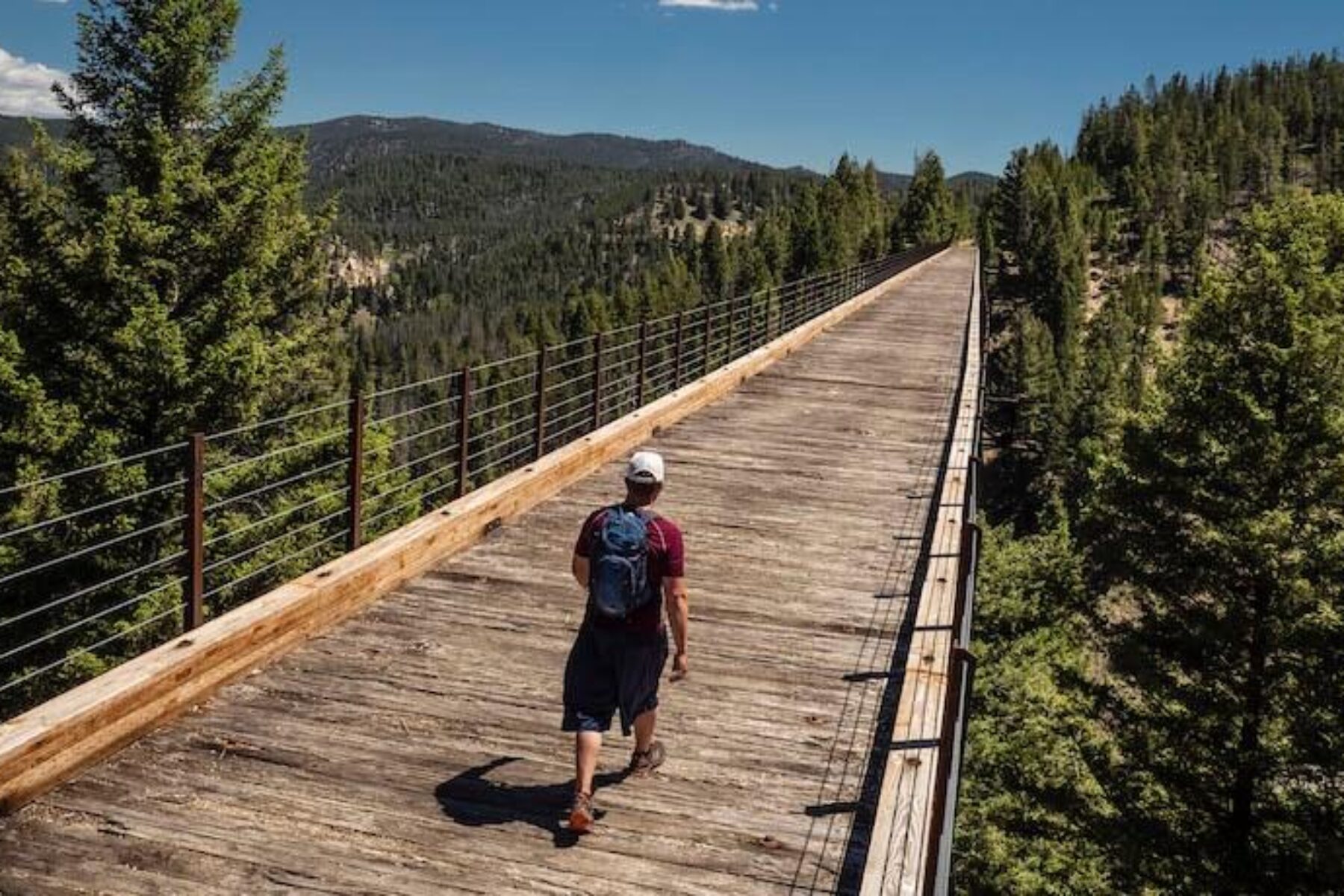
Trail of the Month: May 2020
“Where the railroad used to go through, we have two tunnels and a trestle. When I’m shuttling people to the rail-trail, you tell them that and they get excited, like they’re going to Disneyland.”
—Gina Evans, owner of Butte-based Linked Adventures
Thompson Park beckons on the southern outskirts of Butte, where the vast openness of Big Sky Country gives way to the backcountry beauty of lodgepole pine, spruce and Douglas fir. In the spring, travelers here delight in wildflowers that look as pretty as they sound: glacier lilies, shooting stars and fairy slippers. Framed by the majestic Rocky Mountains, the picture-perfect setting sits roughly equidistant between two national parks—just a half-day’s drive from both Yellowstone and Glacier.
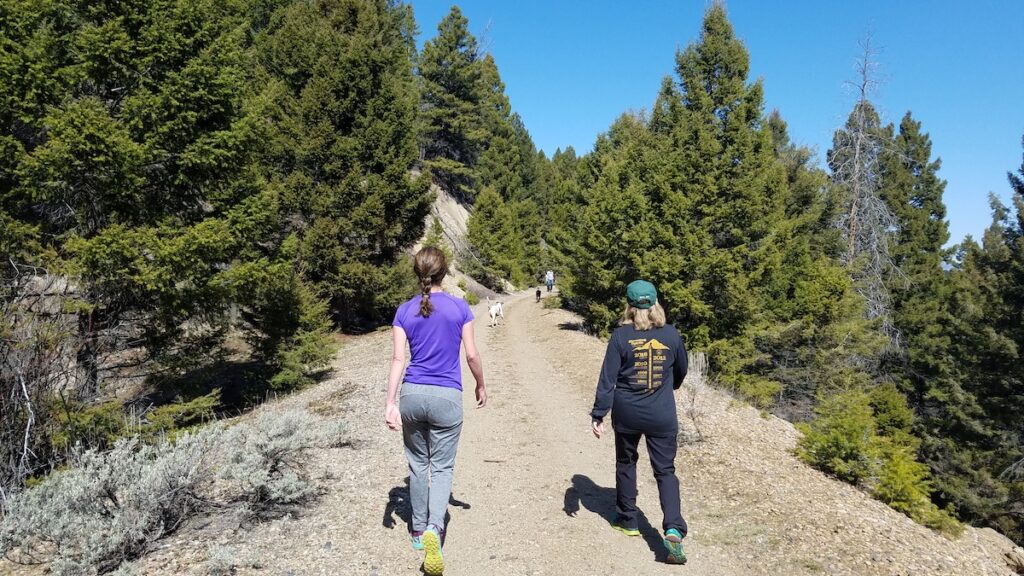
Like a nesting doll, the park itself is tucked within Montana’s largest national forest, the 3-million-acre Beaverhead-Deerlodge National Forest. The national forest service co-manages Thompson Park with the City-County of Butte-Silver Bow—the only such partnership in the country. Traversing its center, the Milwaukee Road Rail-Trail serves as the backbone for the park’s nearly 30 miles of rustic trails for hiking, mountain biking and horseback riding.
“It was an unknown gem for quite a while,” said J.P. Gallagher, director for Butte-Silver Bow Parks and Recreation. “Within the last 10 years, Thompson Park has really started to come around. There are so many levels of trails there; a beginner can enjoy it, or someone that wants to do really extreme mountain biking—all right in the same area. The Milwaukee Road trail was a great addition to the park and what we can offer.”
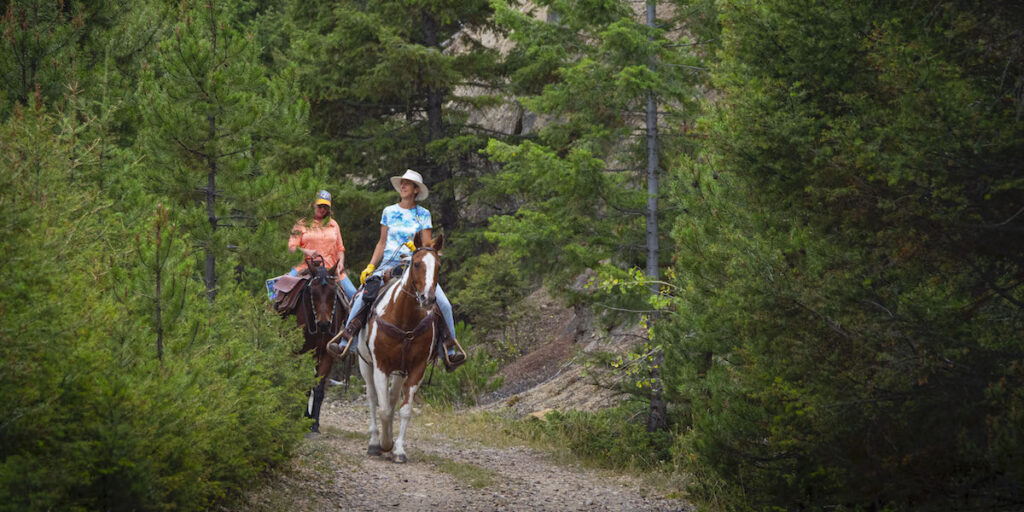
Three primary trailheads along the 4.5-mile historical pathway—Sagebrush Flats, Lower Eagles Nest and Lions Den—offer jumping off points for adventure with looped routes that whisk visitors to spectacular viewpoints and opportunities to get knee-deep in nature.
“Thompson Park has a lot of wildlife, especially deer, moose and elk,” noted Pete Madison, a founding member of Montana’s chapter of Back Country Horsemen. “When she was growing up, my daughter and I rode a lot in the park and we hardly ever went on a ride that we didn’t see wildlife of some sort.”
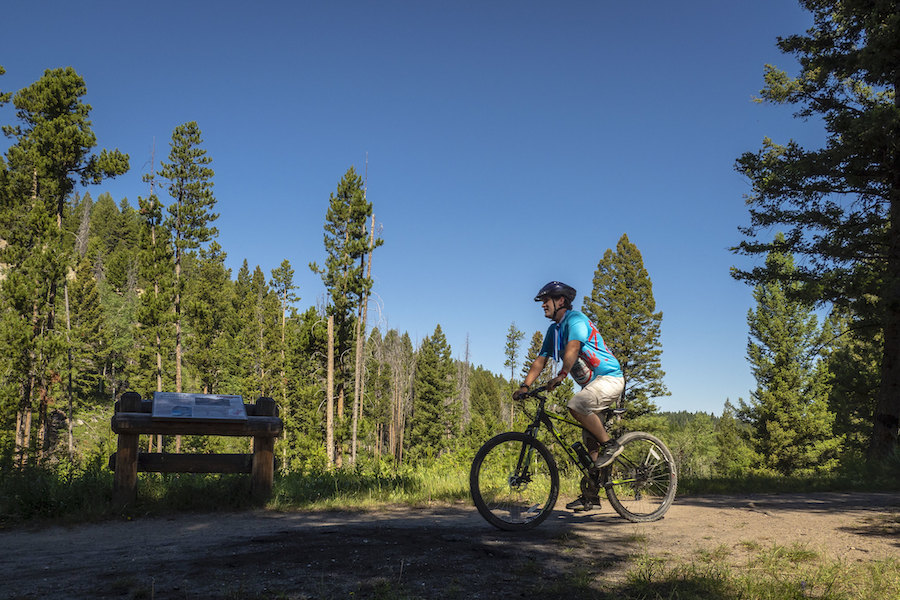
Complementing these natural attributes, the rail-trail adds visual testaments to man’s ingenuity and tangible connections to the area’s past.
“Where the railroad used to go through, we have two tunnels and a trestle,” said Gina Evans, the owner of Butte-based Linked Adventures. “When I’m shuttling people to the rail-trail, you tell them that and they get excited, like they’re going to Disneyland.”
Silver Bow’s Silver Lining
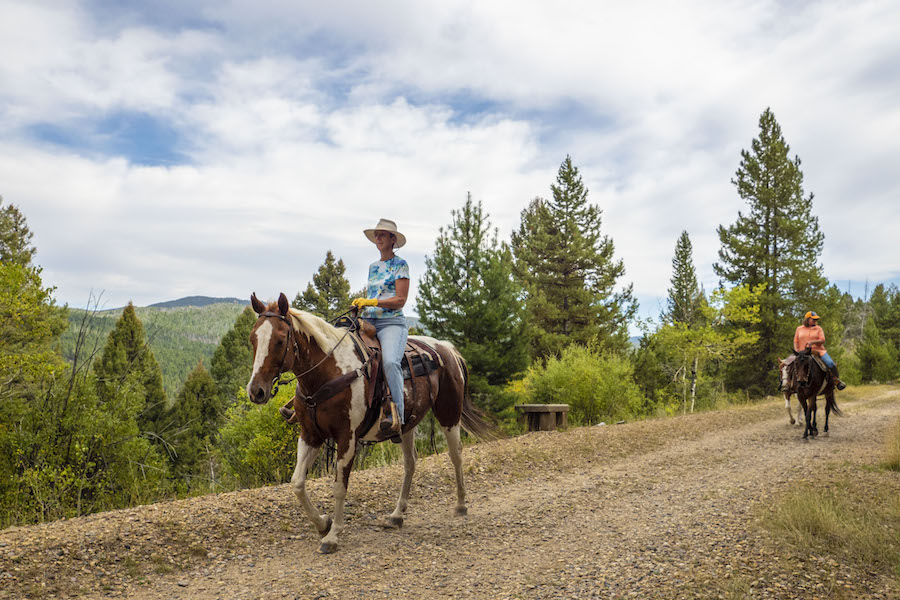
Established in 1864 as a mining camp, Butte quickly flourished. At first, silver and gold were extracted, but then the sheer abundance of another metal—copper—proved even more valuable. By the early 20th century, Butte had over 450 mines, and the city garnered a reputation as “The Richest Hill on Earth.”
Supporting this growth was the Chicago, Milwaukee and St. Paul Railroad—better known as the Milwaukee Road—which was completed here in 1909. When this section of the line, part of a 440-mile stretch connecting Montana and Idaho, was electrified just a few years later, it pioneered the large-scale use of electricity for railroading. Considered a modern marvel, the railroad was visited by Thomas Edison, owner of General Electric—the manufacturer of the electric locomotives—who remarked on its smooth and powerful operation.
“Butte is not like your typical Western town,” explained Jocelyn Dodge, a former recreation forester for the Beaverhead-Deerlodge National Forest. “In its heyday in the 1920s, the city had a population of about 100,000 people, so much of our architecture reflects that wealth and the variety of nationalities that lived here; it’s more like San Francisco or Pittsburgh. And, if there was ever a community that was proud of their heritage and their part in industrializing and modernizing the world, it’s Butte.”
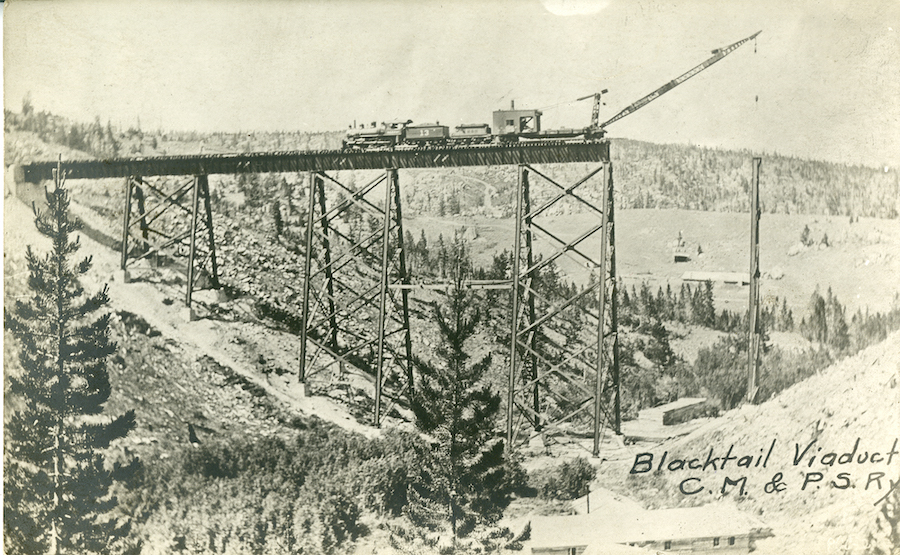
This mining legacy is embedded in Thompson Park’s history, too. It’s named for William Boyce Thompson, a mining engineer and self-made millionaire, who grew up in Butte during the late 1800s. In 1915, the magnate gifted 75 acres of mining claims to the city for the development of a park. (The park was later expanded in 1922 by combining the original donation with federal lands.)
Unfortunately, the city’s riches came with a price, and the area suffered heavily from the damage imparted by decades of mining and smelting. In 1983, the area’s Silver Bow Creek was designated a Superfund site by the Environmental Protection Agency; just a few years later, the Butte area was added to the site as a national priority for remediation. Thompson Park was one of the beneficiaries of the funding used to repair the afflicted local natural resources.
“We have incredible history in our town, but it’s a mining history, so we have some of the scars from our past,” said Gallagher. “The Superfund designation has been a hinderance toward people wanting to come and live in our area because they’re afraid of possible contamination, but we’re working past that.”
Although there is still some work to be done, after nearly four decades of restoration efforts, the city is hoping to finally shake off the stigma of its past, and look toward a brighter, healthier future.
Many Hands (and Hooves) Make Light Work
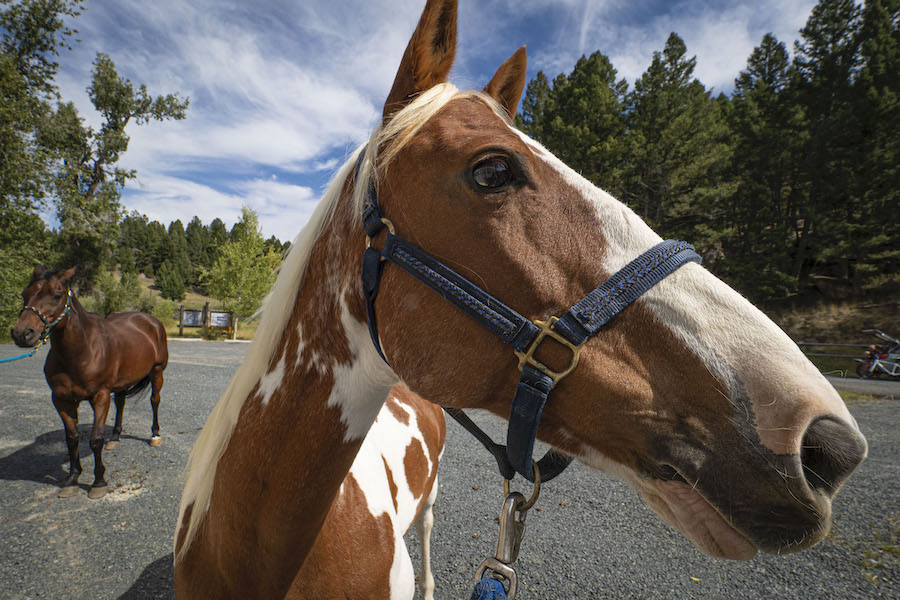
A cleanup of another kind got underway here about two decades ago. Back then, Thompson Park had fallen into disrepair, becoming vandalized and neglected. To get it back in shape, the forest service welcomed teams of hardworking helpers.
“What’s unique about this park is that much of the trail system was done by volunteers,” enthused Dodge. “Locally, it was done though the Back Country Horseman and the Highland Cycling Club, but much of it was also done by the AmeriCorps of St. Louis; they’ve been coming out here for 20 years, so they’ve been very instrumental in developing the trail system that’s now part of Thompson Park.”
Madison has fond memories of those early efforts. “We had a park cleanup day every year for several years and filled up dumpsters with everything that had been discarded,” he said. “And, at the end of the day, we’d have a little cookout and social event for our club—it was just a heck of a bonding thing for our group.”
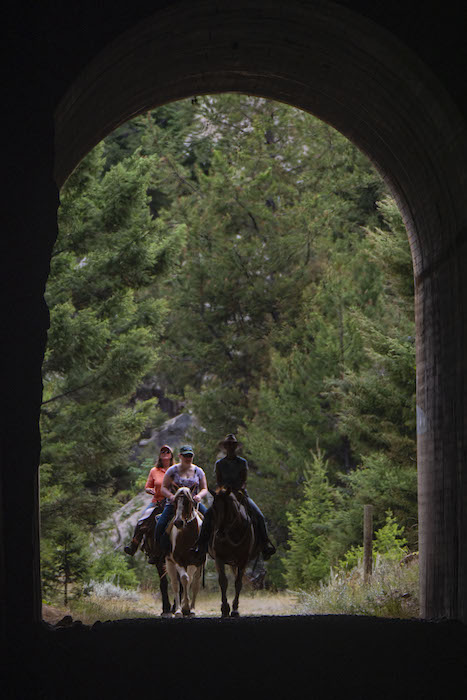
Madison remembers helping out the AmeriCorps members, too, as they developed new trails in the park and reclaimed overgrown routes. With their horses, Madison’s group would ferry supplies into the wilderness for them, and as these volunteers came from big cities, being around the animals was a unique and charming experience.
“AmeriCorps was a delightful bunch of young people to work with,” said Madison. “It was fun to visit with them—and they wanted to pet the horses, of course. One kid was from San Diego and he’d never seen a horse, so every time I came in with a load of water, he was always there to greet me and pet that horse.”
Although he’s older now and retired, Madison still likes to pack a chainsaw on the back of his horse to cut up any downed trees he comes across while out riding the trails. “It’s just real gratifying to see how much use the park gets now,” he said proudly.
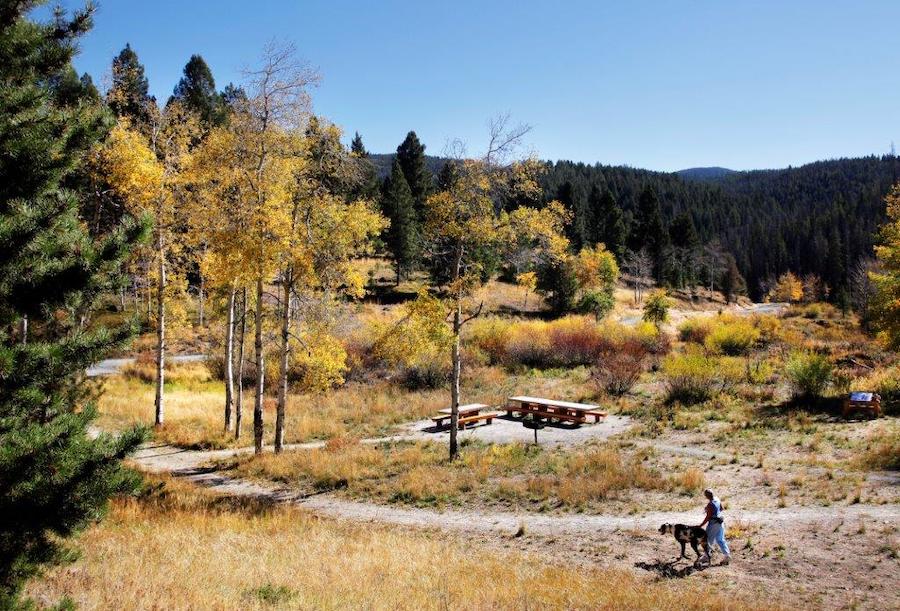
Dodge, too, has recently retired after nearly three decades of work in the U.S. Forest Service, but she remains passionate about the park, which she calls “my baby.” Just this year, she helped launch a volunteer stewardship group, Friends of Thompson Park, and serves as its vice president. In that role, she hopes to finish a project that she began before retirement: the installation of solar-powered lights in the rail-trail’s two tunnels—one spanning 550 feet and the other 1,100 feet—to improve safety. The project got a boost of $27,500 with a Doppelt Fund grant from RTC last year, a program that aims to provide support for smaller projects that are vital to trail systems but often fall through the cracks of traditional funding streams.
Related: RTC’s Doppelt Fund Supports 10 Multiuse Trail Projects in 2019
The Path Forward
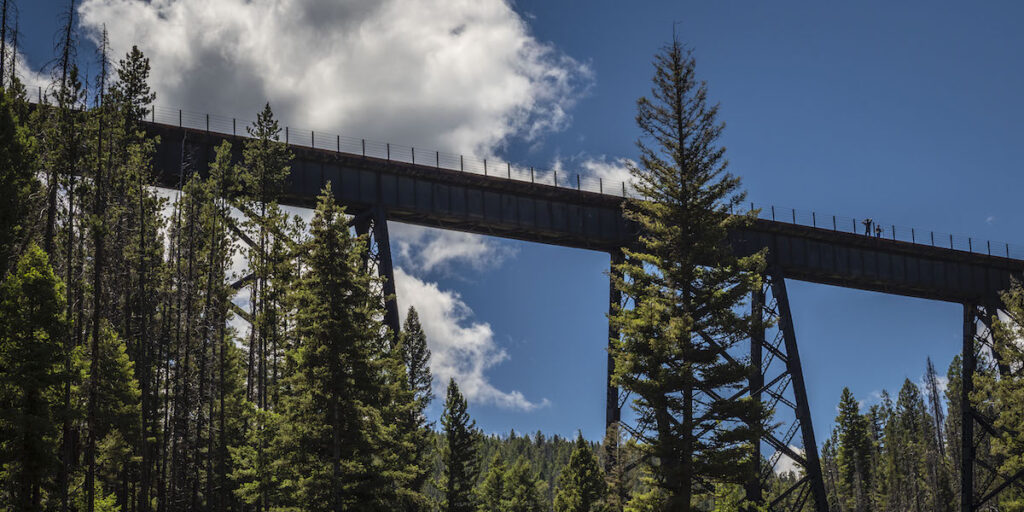
The Butte area has seen its fair share of ups and downs, but the challenges have been met with the resiliency and hard work of its people. Within Thompson Park are reminders of just such a turn-around; many of the park’s facilities—such as roads, trails and picnic areas—were built by the Works Progress Administration in 1935 as the country aimed to get back on track after the Great Depression. Our nation once again faces economic peril, but perhaps civil projects, such as trails—and the recreation and tourism economies they support—can once again help play a role in recovery. Before the pandemic turned the world upside down, the state’s pristine outdoor spaces were booming revenue generators and supported 71,000 jobs.
“For Montana, outdoor recreation is the number two industry in the state, generating $7.1 billion [in consumer spending]—it’s huge,” said Gallagher.
On a local scale, the rugged Continental Divide National Scenic Trail (CDT), which forms a horseshoe around Butte and stretches from Canada to Mexico, is a major draw for the city. Thompson Park’s rail-trail ties right into it at Pipestone Pass, offering an additional option for exploration.
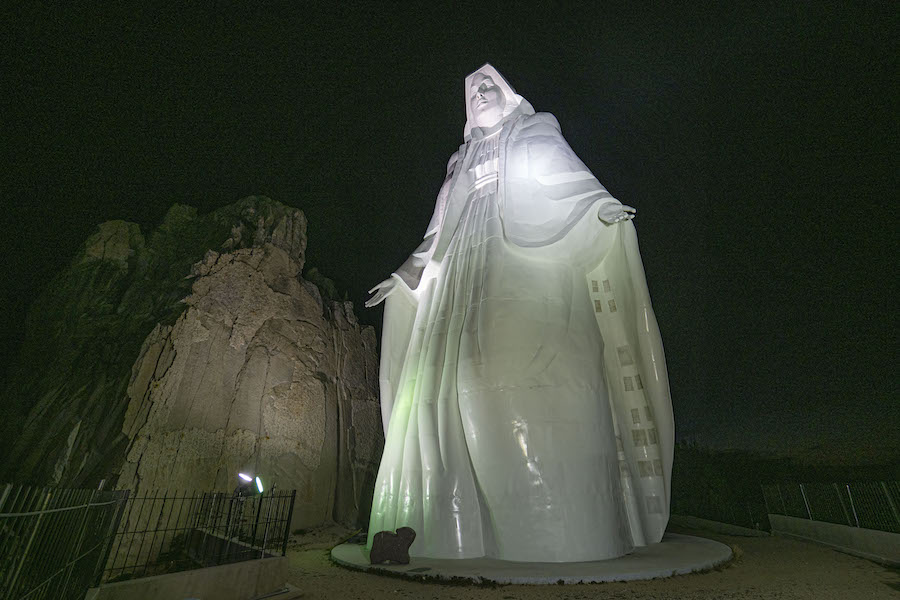
The CDT also provides access to one of the area’s most unusual features: the Our Lady of the Rockies statue, which gazes serenely over Butte, 3,500 feet below. Reaching a height of 90 feet, the statue is one of the tallest in the United States, not far behind the Statue of Liberty. The steel structure, gleaming white, was originally dreamed up by a local man to honor his wife who had recovered from cancer. The community banded together to build it, and when it was completed in 1985, it was dedicated “to woman everywhere, especially to mothers.”
This statue, the Continental Divide, Thompson Park’s picturesque landscapes and mountain vistas, the area’s industrial heritage—all the things that make Butte special—are a microcosm of the wonders to be found along the entirety of the Great American Rail-Trail, of which the Milwaukee Road Rail-Trail is part. In contrast to the CDT, this national route extends east and west, between Washington, D.C. and Washington State. For locals, it’s exciting to think that their beloved corner of southwest Montana is an important piece of a developing 3,700-mile journey across the country.
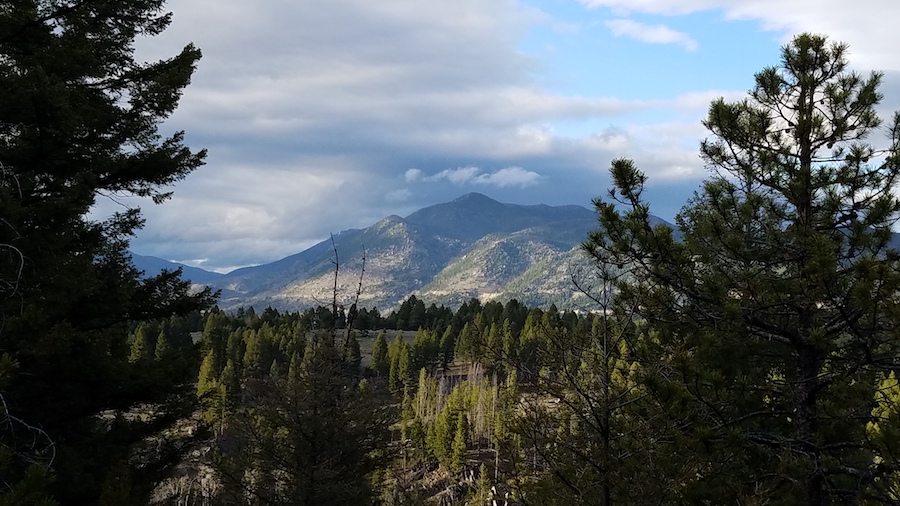
When pressed for his favorite spot in Thompson Park, Madison chuckled and confided, “There is one spot on the trail where somebody painted a blue dot on this big rock, and that was a place that we all knew about and where we would stop for lunch, there at the blue dot. It’s up there on the Continental Divide, and you’ve got a heck of a view in all directions; it’s just beautiful. I would call it ‘God’s country.’”
Special thanks to Jocelyn Dodge for her abundant assistance with the research for this story.

Donate
Everyone deserves access to safe ways to walk, bike, and be active outdoors.



